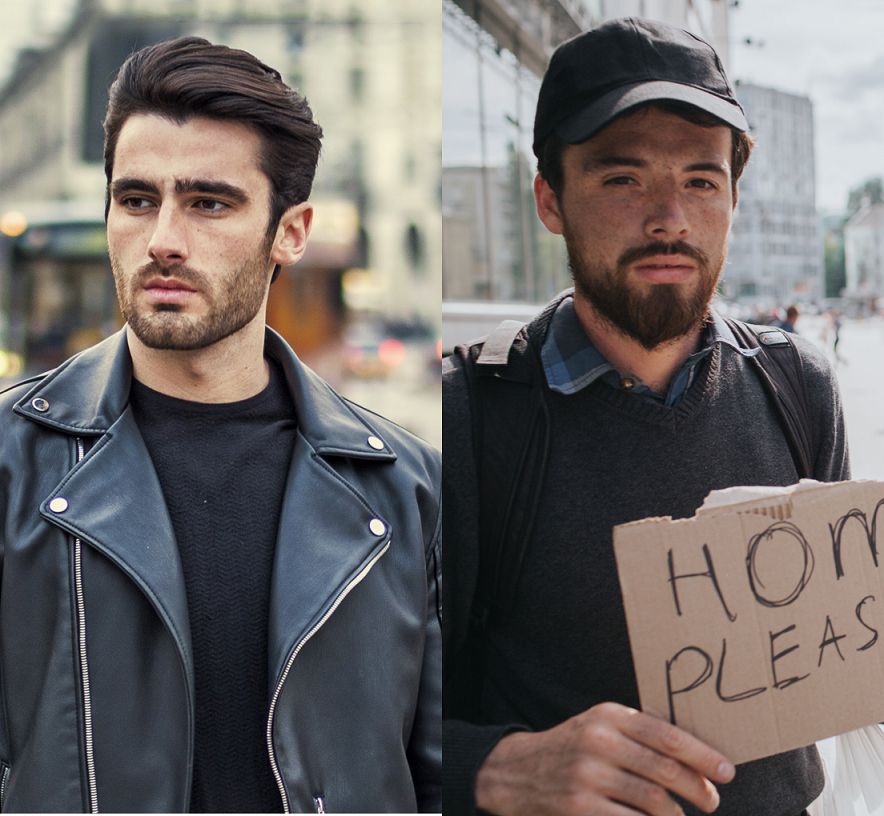What does homelessness look like? That’s easy, right? We see the homeless at intersections around our communities with signs asking for help. They wear ragged, mismatched clothes, they are pale, dirty, thin and there is an emptiness in their eyes. Many are suffering from addiction. They have an unmistakable look. It’s so easy to pick out those in our community who are homeless. We can meet someone and know right away with certainty whether they are homeless or not.
But can we? Are we so sure? You meet a good-looking young man, wearing the latest fashion, hair and beard neatly trimmed, freshly showered, a little gaunt but otherwise looking healthy and he tells you that he is homeless. You don’t believe it. How can this handsome young man be homeless? He’s so put together, so confident. But he’s not. Beneath his calm exterior, he’s terrified, unsure where his next meal will come from, unsure whether he’ll be able to find a place to sleep that night and every other night that follows, unsure whether he will survive from one day to the next.
You see we think that we can identify a person suffering from homelessness by the way that person looks or dresses. We have been conditioned to identify the homeless by their appearance. But appearances are deceiving and the reality is we usually cannot. Some people who are homeless don’t fit our stereotype, they don’t “look” homeless. And among members of the LGBTQ community who are homeless, this is the rule not the exception.
In the LGBTQ community, we put a high value on appearance. Our clothing should be stylish and fit well, our hair clean and trimmed, our carriage and demeanor sophisticated. You see, appearance matters, and if you’re homeless, it can mean the difference between having shelter for the night or sleeping on the streets. This is particularly true for homeless gay, bisexual and trans men who use gay dating/hookup apps as a way to find a place to spend the night. But like trying out for a team or auditioning for a leading role, we have to look good in order to impress possible suitors on these sites. The competition for attention is fierce and how you look matters. Appearance is the differentiator. Appearance determines whether you get “picked.”
Appearance also often times dictates the way we treat the homeless. We feel more at ease with a well-dressed, well-manicured, well-mannered person than we would with someone who is dirty, dressed in old, soiled clothes and may not have bathed in several days. But it is the dirty, disheveled person who we focus our attention and resources on because he obviously needs our help. It is the clean-cut man that we ignore, because he can’t be as needy as the person who “looks” homeless in our eyes.
This is why it is so hard for LGBTQ people who are homeless. Only a few truly hit rock bottom and end up looking the way we generally expect homeless people to look. Because of that, LGBTQ people who are homeless and are able to maintain their appearance are often overlooked by the very organizations who are there to deliver services and help. These LGBTQ people don’t look needy enough, they don’t “look” homeless. So their vicious cycle of homelessness continues.
Do we really know what homelessness looks like? The answer, like the answer to most questions, is complex. There isn’t a “homeless look”. Look around you now and see if you can really identify who is homeless and who isn’t. And the next time a well-dressed, well-manicured, well-mannered young man asks you for help, don’t think twice about helping him. He may need your help more than you know. He needs help from all of us.
Join us at Restoring Pride and together will eliminate homelessness in the LGBTQ community.

